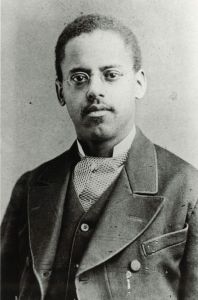Dig Deeper to Understand Black Americans’ Influence on Commercial Real Estate
By G. Lamont Blackstone February 21, 2024 6:41 am
reprints
February brings with it Black History Month, that recurring ritual that pulls back the curtain of invisibility that has hidden the role of Black Americans on the national stage.
For the commercial real estate (CRE) industry, I suggest we use this time to embrace the history of African Americans in relation to the built environment. If we are called upon to ruminate on Black history, we might as well make it relevant to our livelihood.
Given the embargoes on Black participation in America’s real estate markets, it would be easy to assume Black history in CRE didn’t exist before the Civil Rights era. We might think there were no Black luminaries before the recent vintage of accomplished leaders such as Don Peebles, Magic Johnson and Cheryl McKissack; or Project REAP alums such as the developer Buwa Binitie or Angele Robinson-Gaylord, the retail development executive elected in late 2023 as vice chair of ICSC’s board of trustees.

But a presumption of nonexistent achievement would yield a much too narrow perspective. It would dismiss the exemplars of Black genius who surmounted racial barriers of the late 19th and early 20th centuries. Those were the indomitable spirits, including the developers of Tulsa’s Black Wall Street district, who imposed their creative wills on the built environment of their time.
So, the next time you step into a building, look at the lighting illuminating the space. We all know that marvel of property technology pioneered by Thomas Edison. Yet, Edison’s lightbulb was made commercially feasible by an African American inventor named Lewis Latimer.
I first learned of Latimer in the early 1990s while reviewing a funding request for a feasibility study. That was for a proposed business incubator bearing his name. And I would discover hidden history cited by the National Inventors Hall of Fame: “Lewis Latimer invented a method for producing a more durable carbon filament, making incandescent lighting practical and affordable for consumers.”
Prior to that chance encounter with Latimer’s legend, his role in American technology and commerce was invisible to me throughout my secondary and collegiate education. The role probably remains unknown to most Americans. All I was ever taught about Black scientific innovators consisted of George Washington Carver and — well, he was basically it.
What made Latimer’s accomplishments even more astounding was that he, the child of escaped slaves, was self-taught in mechanical drafting and had no formal education beyond grade school. However, Latimer was a sponge for knowledge and conceptualized the means of making electric lighting practical. That was after he assisted another famous figure, Alexander Graham Bell, in winning the patent for the telephone — another device that has shaped office work and the built environment of commercial districts.

Yet, while Latimer was on the East Coast, in 1887 a Black entrepreneur, Alexander Miles, was at work in the Midwest developing a design for the automatic elevator door.
Before that innovation, passenger elevators were risky propositions: People sometimes plummeted to their deaths in the shafts because the doors had not been properly closed. We now take for granted that the elevators in office buildings and hotels lift us safely to upper floors.
Thus, Lewis Latimer and Alexander Miles demonstrated in the 19th century that DEI can also mean determination, excellence and innovation. We can learn from these monuments of Black achievement the character that makes great individuals. We can mimic the creativity which can be spawned regardless of the hostile attitudes of an era, whether it is one of legalized segregation, or the condescending acceptance of Black existence — provided that a racial minority remained minor. Witness the current 2020s with its all-out assault on the value of diversity and inclusion.
Indeed, we can make these achievements a regular reminder of our own potential for shaping the built environment. That can happen every time we enter an elevator or turn on a light, whether in a high-rise or in the dark recesses of our minds.
Black History Month calls to all Americans, if they are willing to heed its echoes, to restore in the present a connection to the past. If the CRE industry holds firm to the value of DEI — as did, implicitly, Edison and Bell — this industry will see more Black achievers inducted into the CRE profession’s halls of fame.
G. Lamont Blackstone is the acting executive director of Project REAP, a national organization that aims to diversify commercial real estate’s talent pool.


